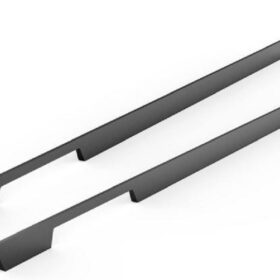Regulatory Compliance and Standards for G-Profile Handles
Regulatory Compliance and Standards for G-Profile Handles: Ensuring Safety and Quality in High-Performance Applications
In industries where unwavering safety and precision are paramount, the standardization and strict adherence to regulations for G-profile handles are of utmost importance. These handles serve as critical components in aerospace, medical, and other high-performance environments, where their design and construction must meet stringent requirements to prevent equipment failures and ensure user safety.
The Significance of Regulatory Compliance
Regulatory bodies, such as the Federal Aviation Administration (FAA) and the International Organization for Standardization (ISO), establish comprehensive standards and guidelines for G-profile handles to ensure they meet specific safety and performance criteria. These regulations govern aspects such as material strength, dimensions, and ergonomics, ensuring that handles can withstand the rigors of demanding environments and are comfortable to use.
Benefits of Standardization
Standardization of G-profile handles offers numerous benefits for manufacturers and users alike. By adhering to established standards, manufacturers can streamline production processes, reduce costs, and ensure product consistency. For users, standardized handles provide confidence that they are using products that meet the highest quality and safety requirements.
Key Standards for G-Profile Handles
Several key standards govern the design, testing, and use of G-profile handles. These include:
– MIL-HDBK-887, “Human Engineering Design Criteria for Military Systems, Equipment, and Facilities”
– ISO 28692, “Handles for Hand-Held Tools”
– SAE AS8599, “Aerospace Standard for Handles, G-Profile, 15° Bend, Curved Surfaces”
These standards specify detailed requirements for handle geometry, materials, finishes, and functional performance.
Testing and Certification
To ensure compliance with standards, G-profile handles are subjected to rigorous testing. Tests may include tensile strength, fatigue resistance, and ergonomic evaluations to verify their ability to withstand extreme conditions and provide optimal user comfort.
Manufacturers obtain certification from accredited testing laboratories to demonstrate that their handles meet the applicable standards. This certification provides assurance of product quality and compliance.
Consequences of Non-Compliance
Failure to comply with regulatory standards can have severe consequences. Non-compliant handles may lead to equipment malfunctions, accidents, or injuries. Furthermore, using non-certified handles can result in legal liability for manufacturers and users.
Conclusion
Regulatory compliance and standardization for G-profile handles are indispensable for ensuring the safety, quality, and reliability of high-performance applications. By adhering to these standards, manufacturers and users can mitigate risks, enhance productivity, and foster a culture of safety and excellence.
-
2024-11-29Top Trends in Modern Kitchen Cabinet Pulls for 2024
-
2024-11-28The Ultimate Guide to Modern Kitchen Cabinet Pulls- Materials, Styles, and Tips
-
2024-11-27Elevate Your Kitchen Design with These Must-Have Modern Cabinet Pulls
-
2024-11-26Sleek and Stylish- The Best Modern Kitchen Cabinet Pulls for a Contemporary Look










